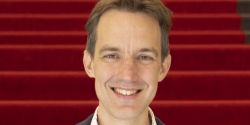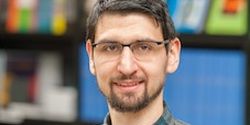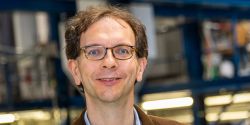Title: Predicting ultrafast quantum dynamics of 2D antiferromagnets with neuromorphic computing
Speaker: Johan Mentink (Radboud University)
Time: Oct. 6, 2022, 10:00–11:00
Location: TU/e Flux 5.265 and online (MS Teams)
Antiferromagnets host the fastest and smallest magnetic waves of all magnets. However, understanding the properties of these waves at the shortest wavelengths has been challenging even for the simplest model: the antiferromagnetic Heisenberg model in two dimensions [1]. This challenge stems from the failure of quasi-classical approximations, which otherwise have been highly successful in describing both equilibrium and dynamical properties of magnetic materials. To bypass these limitations, I will present our recent efforts that exploit neural network quantum states (NQS) [2], a method inspired from artificial neural networks. The key advantage of NQS is that it provides a systematically improvable approximation of the full many-body wave function with only polynomial computational costs, thereby overcoming limitations of existing methods.
To illustrate the potential of NQS for ultrafast magnetism, I will present recent predictions on the propagation of antiferromagnetic waves [3,4]. Interestingly, we discovered that at the shortest length and time scales the dynamics features supermagnonic propagation: spin correlations that propagate faster than the fastest group or phase velocity of the system. By comparing with interacting spin-wave theory, we identified that the origin stems from the discrete nature of the spins, yielding an effective propagation speed that is up to 40% higher [4].
Inspired by the algorithmic efficiency of NQS, I will outline our efforts towards enhancing the capabilities by running these algorithms on dedicated neuromorphic hardware [5]. As a first step, we measured the energy cost and compute time for inference tasks on conventional hardware and estimated the same metrics for state-of-the-art analog in-memory computing (AIMC). The comparison shows that AIMC can perform these tasks not only with up to three orders of magnitude smaller energy cost, but also in one order of magnitude shorter computation time. This suggests great potential for more sustainable simulation with neuromorphic algorithms, potentially enabling so far uncomputable tasks in computational quantum physics.
[1] H. Shao et al, Phys. Rev. X 7, 041072 (2017)
[2] G. Carleo and M. Troyer, Science 355, 602 (2017)
[3] G. Fabiani & J.H. Mentink, SciPost Phys 7, 004(2019)
[4] G. Fabiani, M.D. Bouman and J.H. Mentink, Phys.
The CCER seminars are aimed at researchers interested in computational approaches to (energy) research. The seminar is small-scale, typically 15 participants, and interactive, offering lots of room for discussion. If you would like to attend, just This email address is being protected from spambots. You need JavaScript enabled to view it. so as to receive the MS Teams meeting link.






